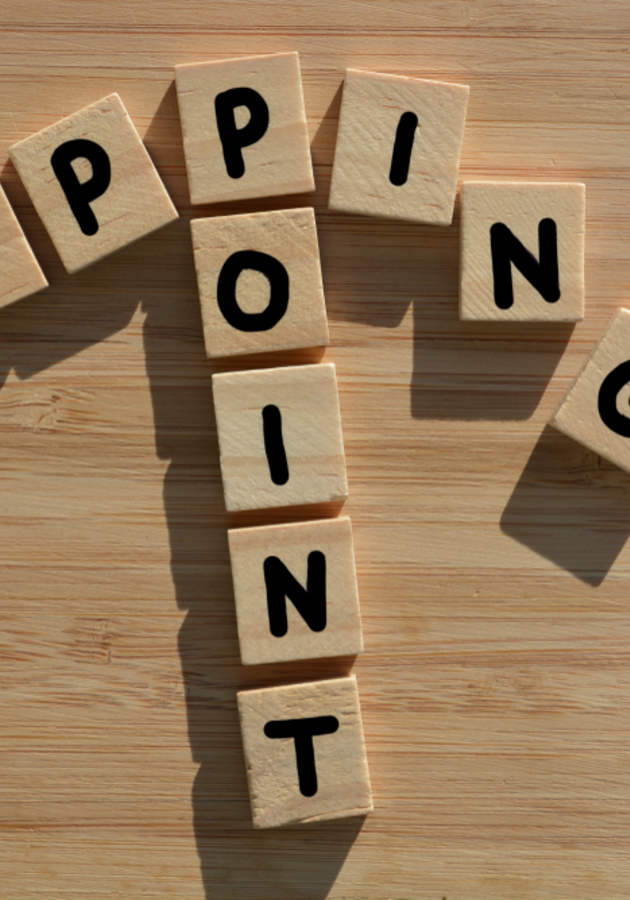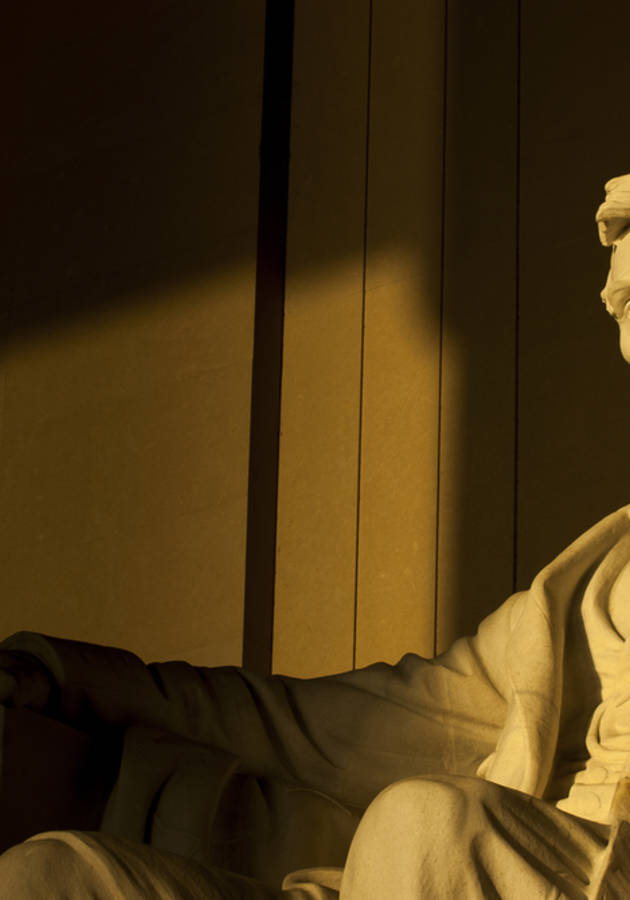Are you constantly overwhelmed by all the stuff in your house that you just can’t seem to organize? Do you wish there was a better way to organize your belongings that wasn’t such a headache? Francine Jay’s “The Joy of Less: A Minimalist Guide to Declutter, Organize, and Simplify” will teach you how to adopt a new mindset of minimalism that you can apply to your home - and your overstuffed closet. So, get ready to learn how to live your life more simply and with more joy!
Adopting the minimalist mindset
Before you start throwing your stuff into piles, you must first learn to think differently and change your attitude about clutter. By doing this, you will learn to change your relationship with your things, so that you can get rid of what you no longer need and not bring in any other items. Jay says you must learn that, “Our stuff exists to serve us, not the other way around.”
First, learn to “see your stuff for what it is.” Sometimes we can scratch our heads at how we came to accumulate so much stuff, but most of it can likely be divided into three categories: useful, beautiful, and emotional. Useful things are those that we use in daily life, such as items used to feed, clothe, and shelter ourselves, followed by other useful items for comfort such as beds, plates and silverware, tools, furniture, etc. Think of it this way, “Anything you use often, and that truly adds value to your life, is a welcome part of a minimalist household.” But remember, these items must be things you actually use! Beautiful things, on the other hand, are not necessary for survival, but are nice to look at, such as art. But, they must have a “prominent place” in your home and be things that you still enjoy. Finally, emotional things are those that “remind us of people, places, and events that are of particular importance to us,” Similar to beautiful stuff, only keep these items if they still “fill your heart with joy,” not because whoever gave it to you would feel bad if you threw it out. Use these categories to evaluate your own stuff, in order to get an idea of what you will keep or throw away.
Next, you must internalize the idea that “you are not what you own.” This is easier said than done, of course, because our things often feel intertwined with our identities - and through advertising, we are often encouraged to overconsume. For example, we often buy certain things to “project a certain image,” such as a more expensive car or other status symbols. This could be called “aspirational stuff.” According to Jay, these reflect a belief that such items, “are projections of ourselves, our personalities, and our positions in the corporate world or social hierarchy.” This belief expands to key parts of our lives such as our homes and the items we fill them with, and our clothes. But of course, none of these things will change who we are. So, “if these things haven’t delivered on their promises yet, it may be time to let them go.” Experiences are more important than the things needed for them, especially if we never use them. The same is true of items from our past that reflect our accomplishments, such as awards. Getting rid of these items may feel like we are throwing away parts of ourselves, but that is not the case - doing this actually allows us to live more fully in the present.
Once you embrace the idea that less stuff means less stress - which means more freedom to live your life - it will become easier to adopt a sense of detachment from your stuff. You will then be on your way to living a more simple life, filled with more joy.
Learn to STREAMLINE
The next step in this journey, after adopting a sense of minimalism and detachment, is to learn the 10 rules that make up the concept of STREAMLINE. These are:
Start over
Trash, Treasure or Transfer
Reason for each item
Everything in its place
All surfaces clear
Modules
Limits
If one comes in, one goes out
Narrow down
Everyday maintenance
These steps can be divided in half. The first five steps will help you in the process of decluttering and organizing your things. For each part of the house you are working on, such as your bedroom or closet, approach it with a clean slate mindset, or Start over. Next, begin going through the items and sort them into piles: things to throw away (Trash), the useful, beautiful, or emotional (Treasure), and things to give away that no longer give you joy and are just taking up space (Transfer). Ask yourself, what is the Reason to keep each item you are keeping? For the items you want to keep, you will then sort them further into piles: the inner and outer circles, and deep storage. The inner circle are items that you use very frequently, stored in easily-reached places, and the outer are those you do not need as often, and can be stored cabinets or closets. Deep storage can be in an attic, basement, or garage: Everything in its place. Next, aim to keep all tables, counters, desks, etc., as clean as possible, in order to minimize distractions: All surfaces clear. These five steps will not only help you do your initial cleanup of all the items in your home, but prepare you to maintain your freshly decluttered home going forward.
The next five steps will help you in approaching new items you acquire in the future. First, learn to group similar items together in clearly labeled and accessible places, so that you know where to find them when you need them, and throw out any unneeded ones: Modules. This will help you further limit your items. Learn to actively limit the items you add to these groups. Next, anytime you get something new, get rid of the old version of the item: If one comes in, one goes out. Then, learn to get as many uses out of your items as possible: Narrow down. Finally, adopt all of these minimalist strategies into your daily life so that your home never becomes cluttered again: Everyday maintenance.
STREAMLINE Eech area of your home
After learning and understanding the importance of minimalism and STREAMLINE-ing, you are now ready to tackle each part of your home with these steps in mind. Use each of the 10 steps in each part of each room or area, and don’t be afraid to get creative with repurposing items or moving them to different areas of your home. Starting with your living or family room, evaluate how cluttered it is and how much space is available. Chances are you probably have a lot of stuff on the floors and surfaces, but it’s important to declutter these areas as much as possible to maximize this space necessary for spending time with family and friends. Look at the items you have and decide which make the most sense for your life. Then group different items into Modules for your various activities, which will make prep and cleanup time much easier. Keeping surfaces clear will make activities more enjoyable, fun, and safe.
Do the same with your bedroom, another commonly used space. This room should be as peaceful as possible in order to encourage good sleep. Focus on only keeping items that are for useful or beauty purposes, such as clothing. Some items that you may want to keep can be moved to other sections of the house. You can get as minimalist as you want with your bedroom items, again based on what works best for you. After this, you will want to tackle your wardrobe or closet, which is probably one of the more time-consuming, but important tasks. Throw out or give away what’s old, stained or no longer fits, keeping what reflects who you are now and what you need for certain activities. Going forward, whenever you buy new clothes, make sure to throw out the older items to avoid further clutter.
In your kitchen, start with your fridge and pantry. Throw out anything old or expired, and keep any useful tools or appliances. Also get rid of or give away extras of anything, or items you seldom use. This is a particularly great opportunity to be charitable by donating non-perishables such as canned goods, or by giving someone an appliance that they could use more often than you. Similarly, in your bathroom, narrow your items down to the most essential toiletries you use every day, with lesser used items organized in a cabinet or drawer. Items such as cleaning products that can be used for multiple purposes are also great for keeping clutter to a minimum.
Hopefully by now you get the idea. Apply the STREAMLINE principles to any area of your home that could use decluttering and simplifying, such as a home office or any other storage spaces you may have.
Declutter your home, declutter your life
Perhaps the most delightful part about adopting a mindset of minimalism and learning to STREAMLINE is then learning how to apply it to all aspects of your life. Once you have learned to declutter your home, it’s important to get your family involved as well. Just as you are learning that your things don’t make you who you are, teach your family, especially children, to adopt this mindset as well. Model this for them by keeping your home as decluttered as possible. This is a healthy attitude to teach your children at a young age. STREAMLINE-ing your home can also be a great family bonding activity - not to mention it will save time and make you all feel accomplished. Make it a habit to regularly get rid of things you no longer need. Spending just a few minutes doing this every day will save you a lot of time in the long run. Your home will look better, and you will feel better, too.
Going through all these steps and adopting this new way of thinking is no doubt a lot of work, but it will be worth the time and effort put in, as you will be able to live with more joy and simplicity than you ever did before. Even better, you can use the skills you have learned and apply them to other areas of your life, learning how to “declutter” your activities and tasks as well. Just as you should make your stuff “work for you,” you should do this with all other aspects of your life, especially with your time. In the big picture, the more people adopt a minimalist lifestyle, the better off the planet will be too, because of decreased consumption overall. The possibilities truly are endless!
Final Notes
Learning to live your life in a minimalist way takes time and work, but it will teach you to think about your possessions (and other areas of your life, like time) in a more active way, so that you are not mindlessly accumulating to the point that you have too much stuff. Once you adopt the concepts of minimalism and the STREAMLINE method, your life will feel happier and more fulfilling, even though you will have less stuff.
12min Tip
If you are feeling overwhelmed by your messy house, minimalism and the STREAMLINE method provides a new way to live. Not only will this method help you clean up and get rid of what you don’t need, it will help you live your life with more joy and simplicity.





























